Language
Setup multiple languages in RMS.
-
Information
-
Setup
- Add Button
Information
The language RMS displays in is determined by the primary language set in the user's Internet Browser.
Language Translations must be setup for all user-input items in RMS.
Language Translation setup will not be visible in RMS until 'Use Alternate Language' has been enabled.

System Administrators will require Security Profile access to use this feature.
-
Setup
- Add Button
Setup
Have your System Administrator complete the following.
- Go to Setup > Property Options > General Information in RMS.
- Navigate to the 'Language' tab.
- Select the checkbox 'Use Alternate Language'.
- Select the Languages and choose the '>' button.
- Save/Exit.
- Log out of RMS.
- Log into RMS.
- Go to Setup > Lookup Tables > Language Translation in RMS.
- Select the Language.
- Select the Associated To.
- Select the Field.
- Enter the Language Translations.
- Save.
- Repeat Steps 10-13 for all Language Translations.
- Save/Exit.

The translations entered will be used throughout RMS when the browser language is set to display in the selected alternate language.
-
Guide
- Add Button
Guide
Go to Setup > Property Options > General Information in RMS.

Navigate to the 'Language' tab.
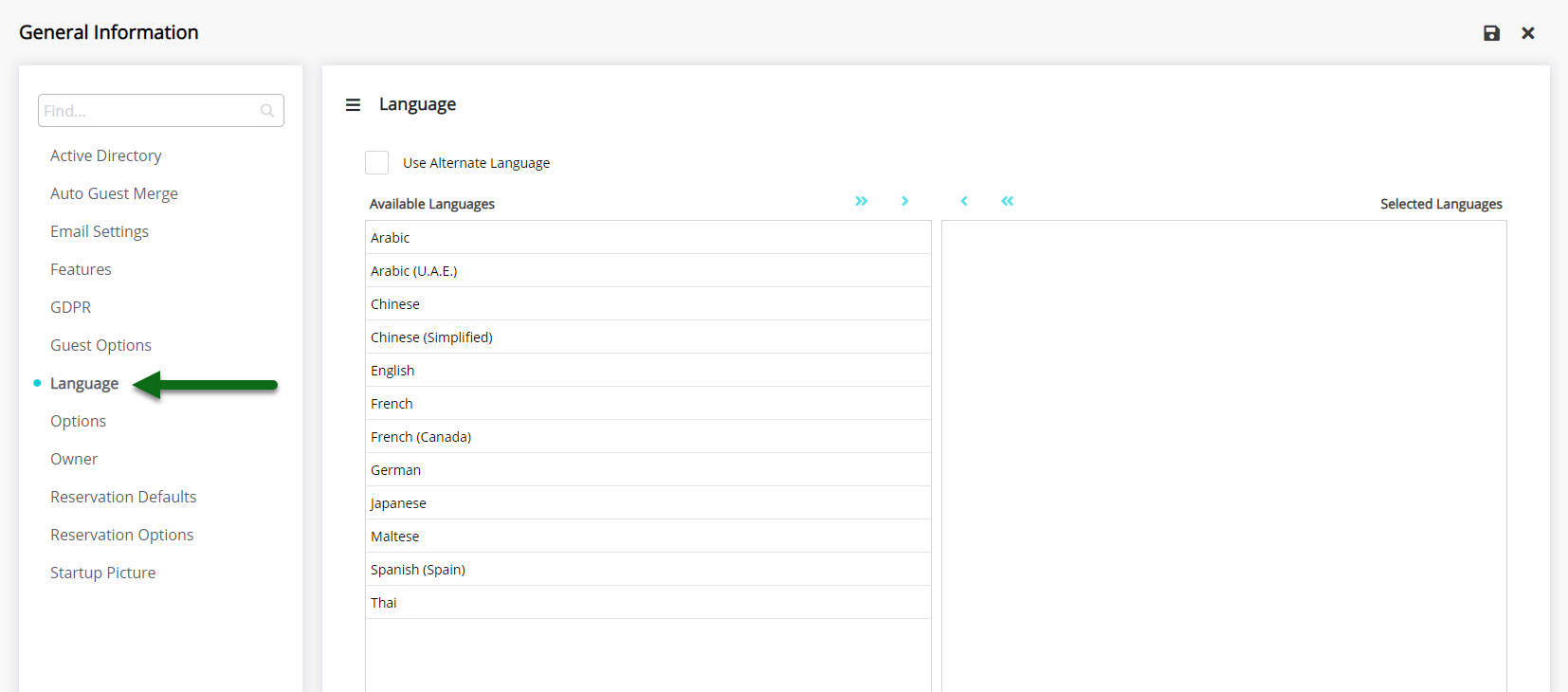
Select the checkbox 'Use Alternate Language'.
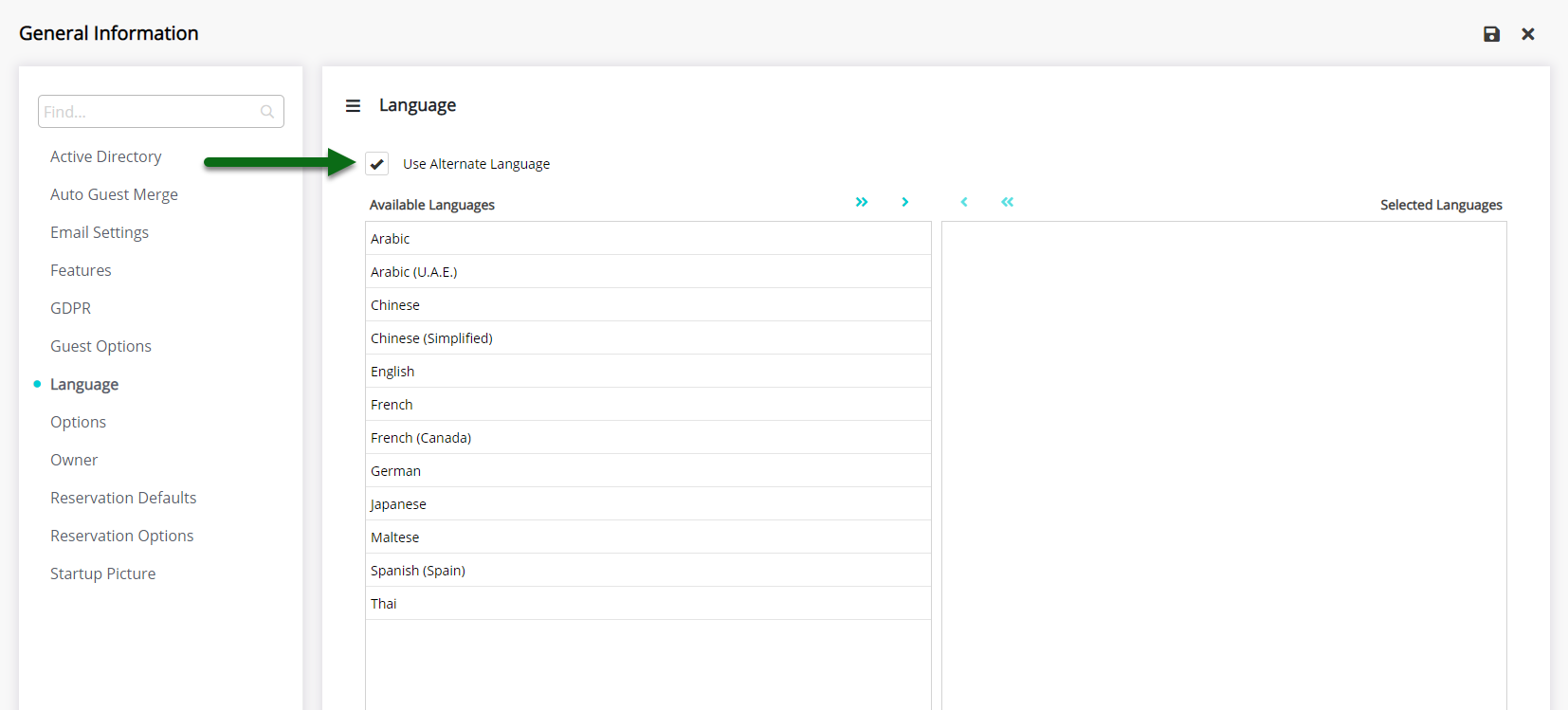
Select the Languages and choose the '>' button.
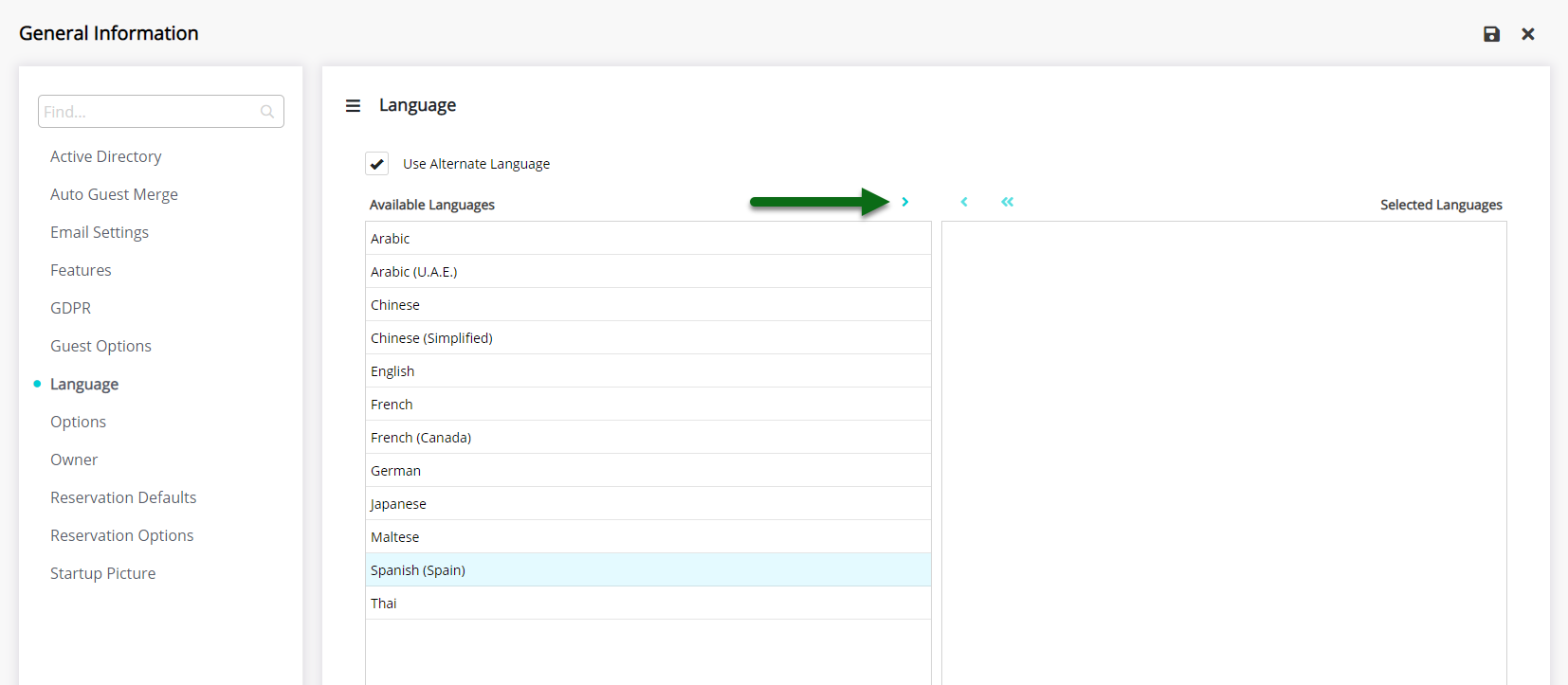
Select 'Save/Exit' to store the changes made.
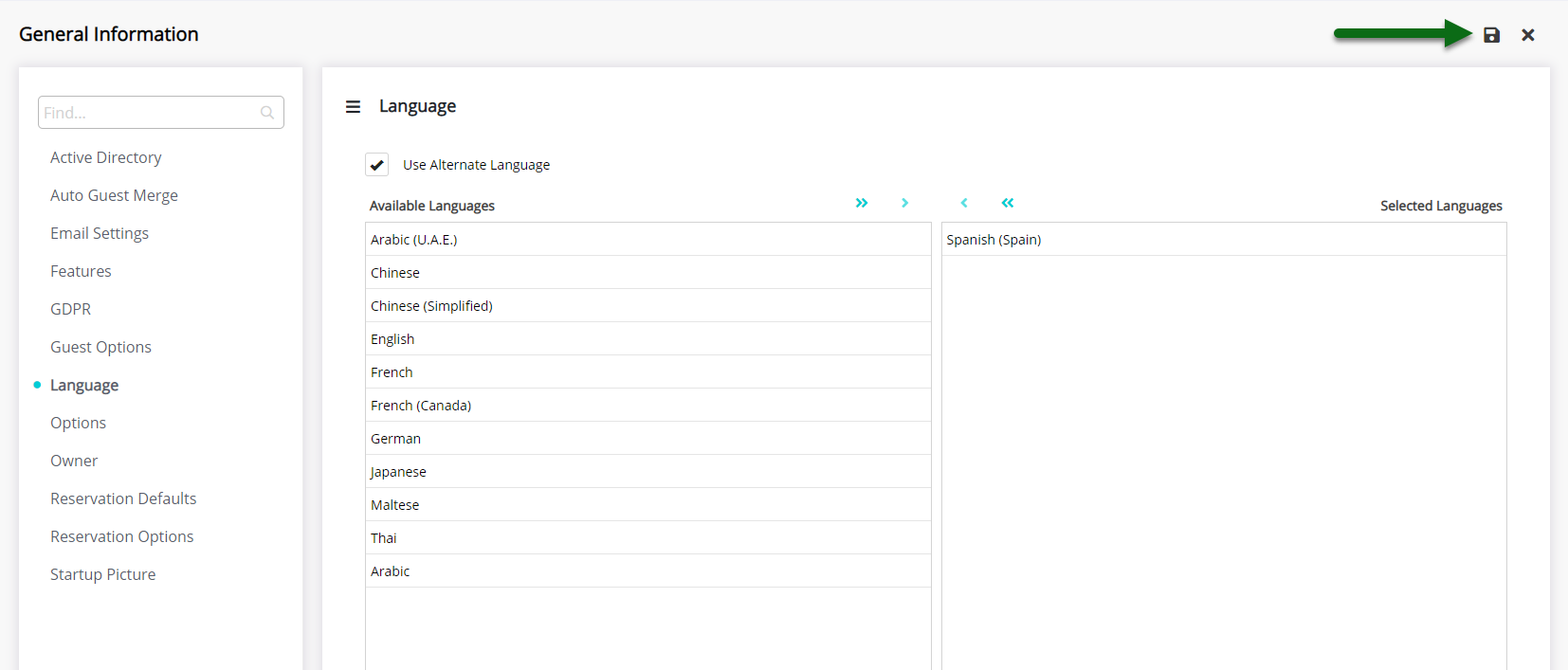
Log out of RMS to allow the database to update with the changes made.

Log into RMS.
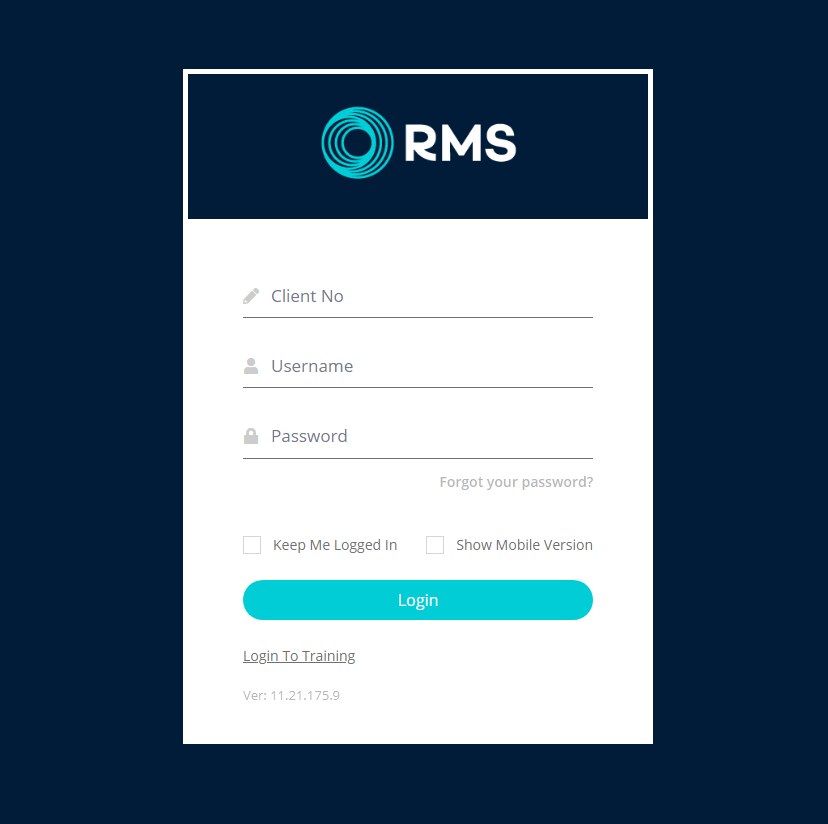
Go to Setup > Lookup Tables > Language Translation in RMS.

Select the Language.
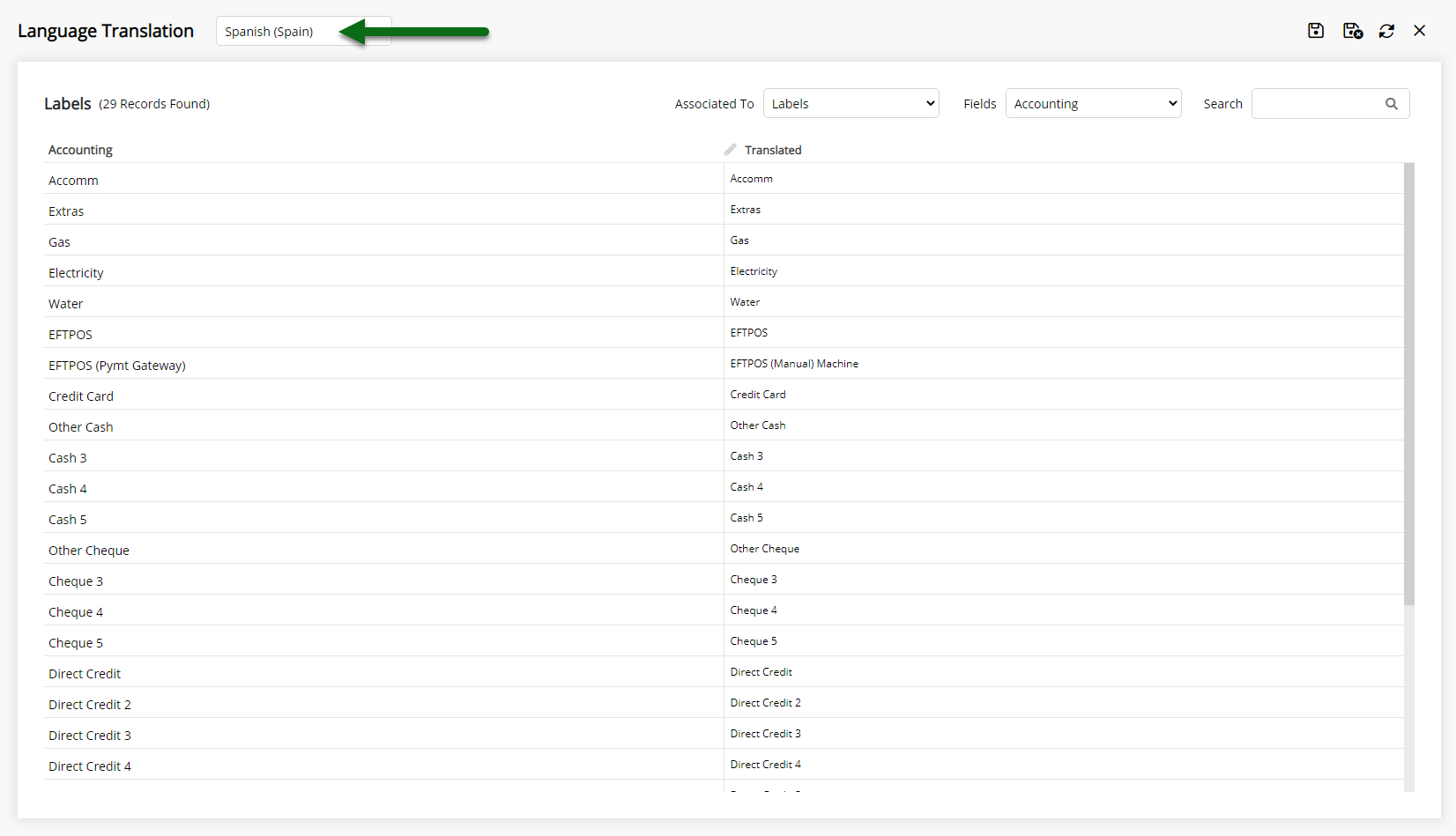
Select the Associated To.
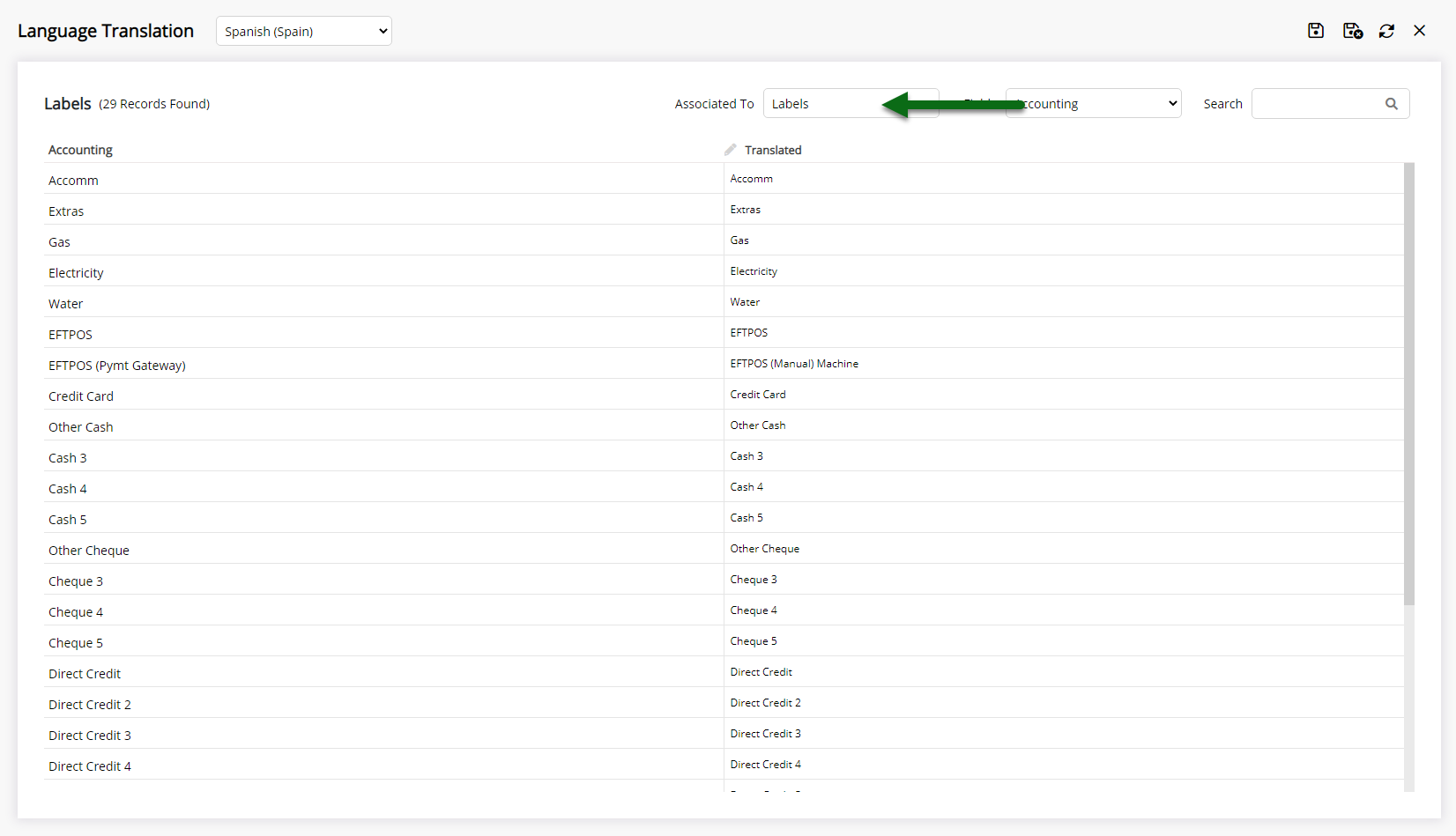
Select the Field Type.
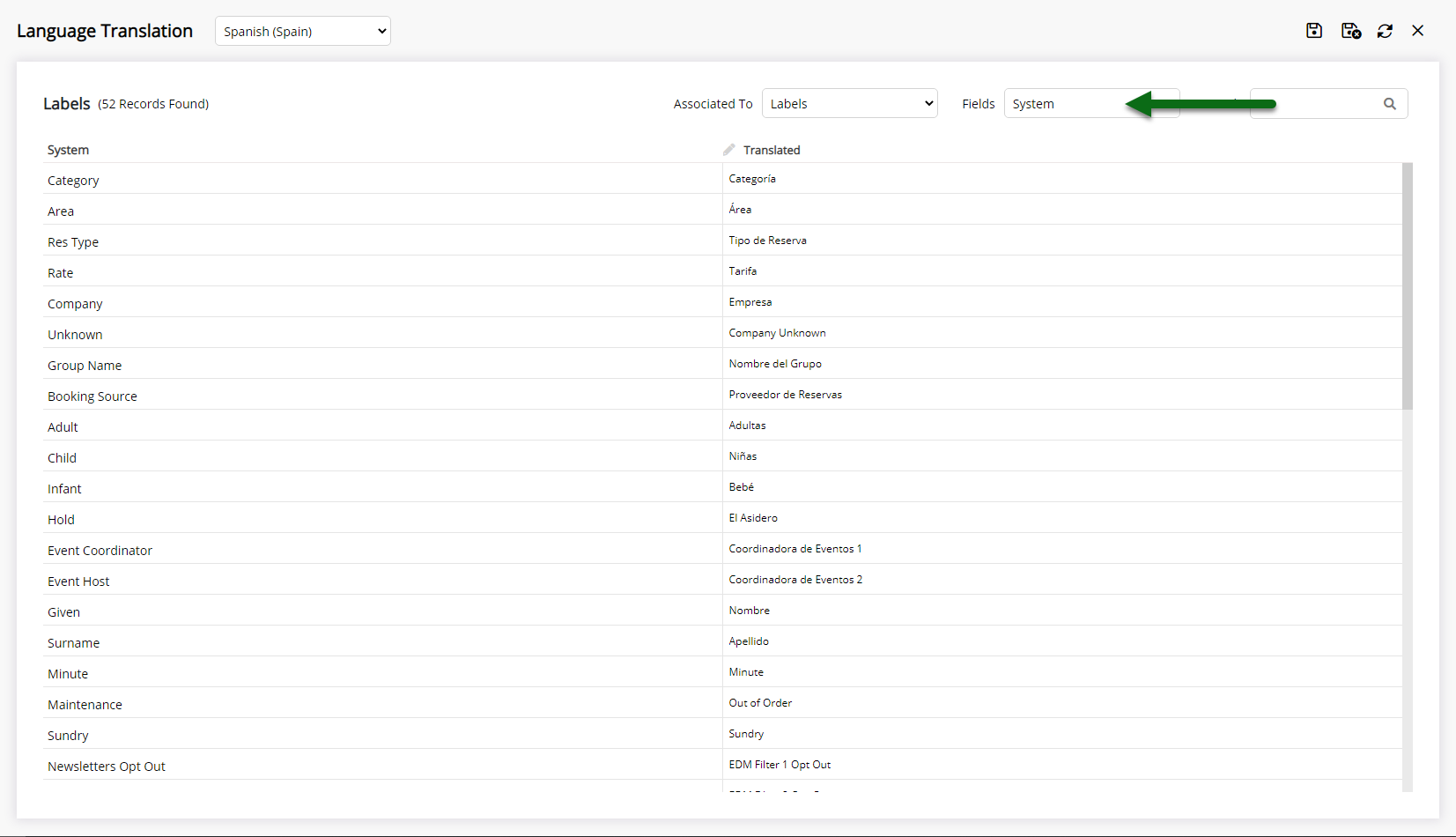
Enter the Language Translations.
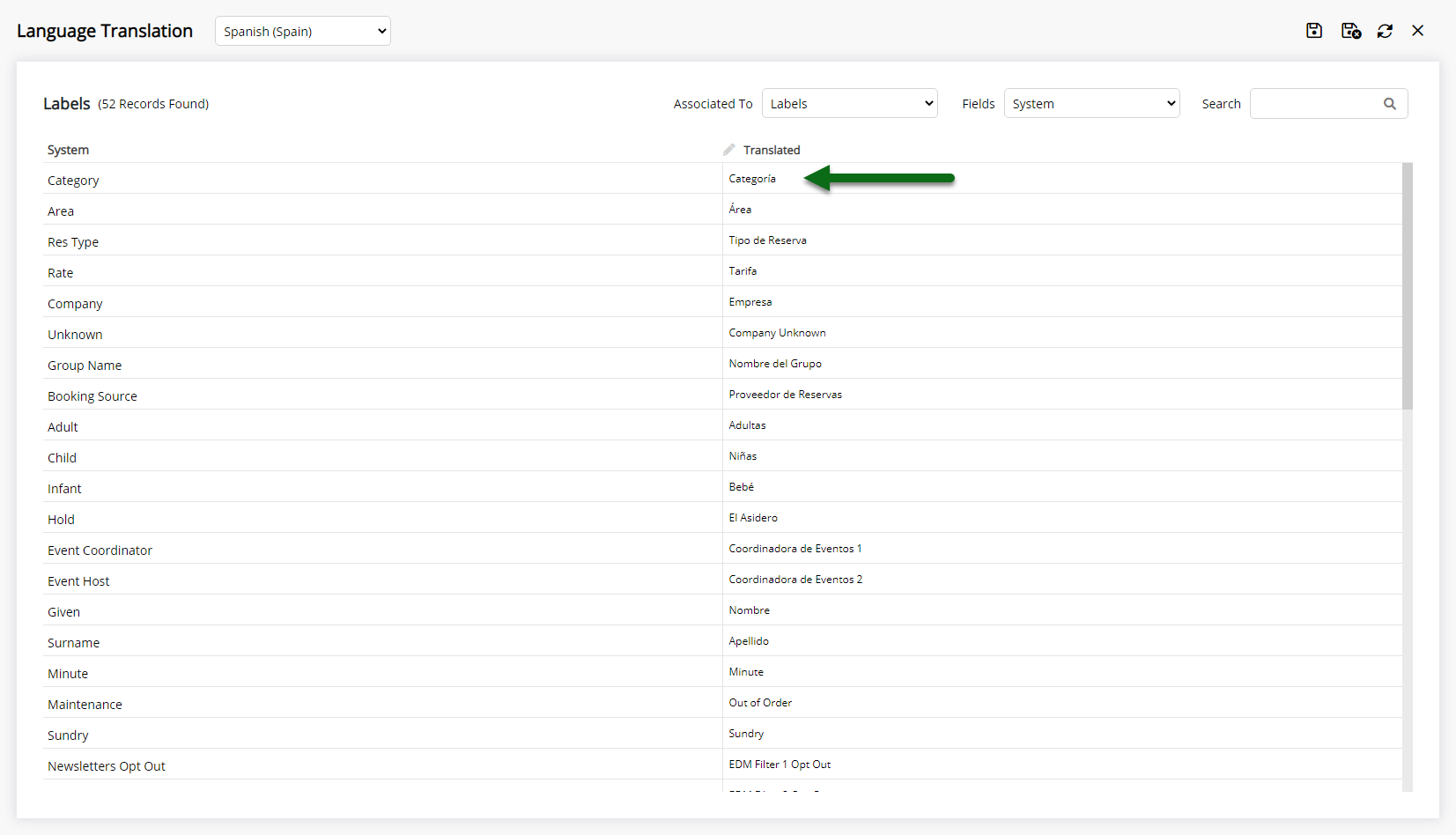
Select 'Save' to store the translations entered.
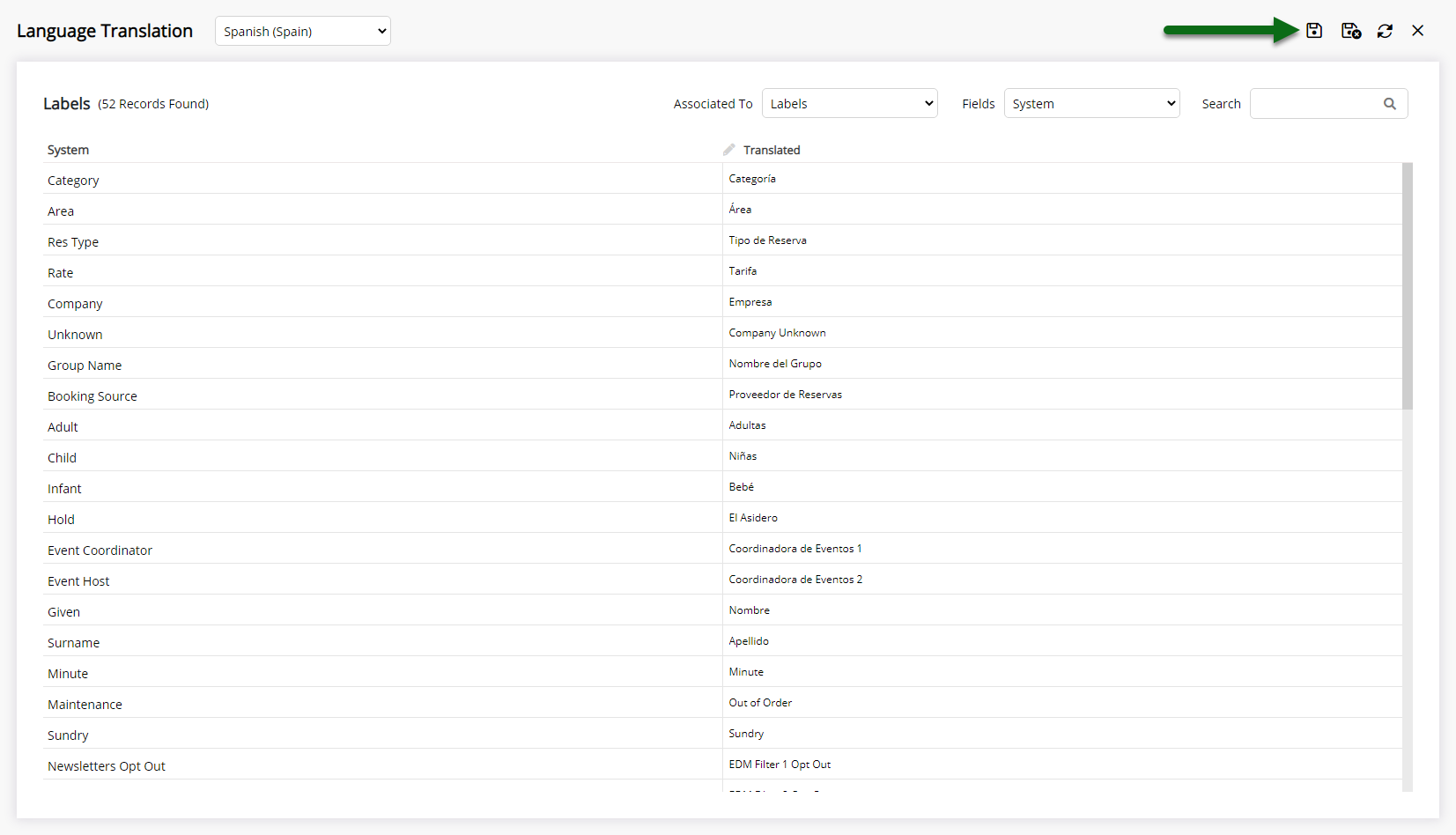
Repeat Steps 10-13 for all Language Translations.

Select 'Save/Exit' to store the changes made.

The translations entered will be used throughout RMS when the browser language is set to display in the selected alternate language.
Setup
Have your System Administrator complete the following.
- Go to Setup > Property Options > General Information in RMS.
- Navigate to the 'Language' tab.
- Select the checkbox 'Use Alternate Language'.
- Select the Languages and choose the '>' button.
- Save/Exit.
- Log out of RMS.
- Log into RMS.
- Go to Setup > Lookup Tables > Language Translation in RMS.
- Select the Language.
- Select the Associated To.
- Select the Field.
- Enter the Language Translations.
- Save.
- Repeat Steps 10-13 for all Language Translations.
- Save/Exit.

The translations entered will be used throughout RMS when the browser language is set to display in the selected alternate language.
-
Guide
- Add Button
Guide
Go to Setup > Property Options > General Information in RMS.

Navigate to the 'Language' tab.

Select the checkbox 'Use Alternate Language'.

Select the Languages and choose the '>' button.

Select 'Save/Exit' to store the changes made.

Log out of RMS to allow the database to update with the changes made.

Log into RMS.

Go to Setup > Lookup Tables > Language Translation in RMS.

Select the Language.

Select the Associated To.

Select the Field Type.

Enter the Language Translations.

Select 'Save' to store the translations entered.

Repeat Steps 10-13 for all Language Translations.

Select 'Save/Exit' to store the changes made.

The translations entered will be used throughout RMS when the browser language is set to display in the selected alternate language.